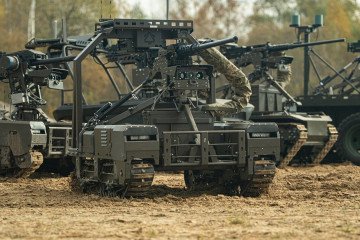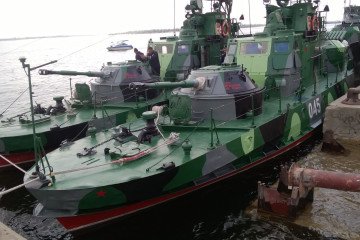- Category
- Latest news
Leaked Files Reveal Russian Naval Forces Train for Potential Nuclear Attacks Across Europe
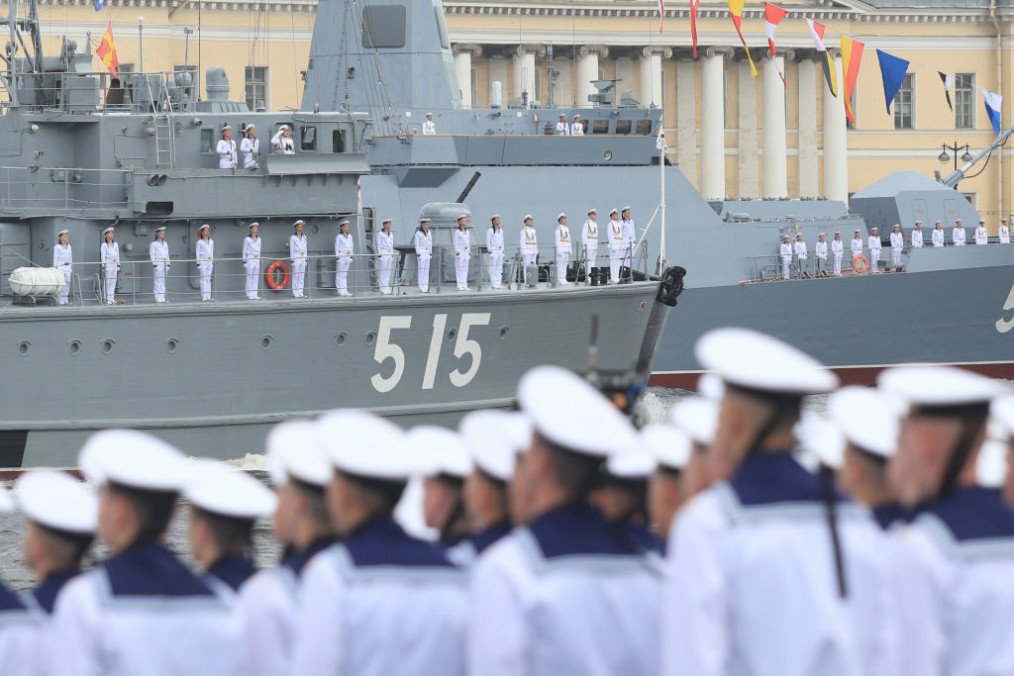
Russia has prepared its navy to strike deep into Europe with nuclear-capable missiles in a potential conflict with NATO, according to classified documents obtained by the Financial Times.
The documents, which include maps targeting locations as distant as the west coast of France and Barrow-in-Furness in the UK, were part of a presentation for Russian officers predating the full-scale invasion of Ukraine.
Previously, the FT reported on a cache of 29 secret Russian military files indicating that Moscow had rehearsed the use of tactical nuclear weapons in the early stages of a major conflict. The latest revelations reveal how Russia anticipated a conflict with the West extending beyond its immediate NATO borders, planning extensive strikes across Western Europe. These documents were provided to the FT by Western sources.
The files, compiled between 2008 and 2014, feature a target list for missiles capable of carrying either conventional or tactical nuclear warheads. Russian officers emphasize the strategic benefits of employing nuclear strikes at an early stage.
The presentation also reveals that Russia has maintained the capability to deploy nuclear weapons on surface ships, a move that experts argue increases the risks of escalation or accidental use. The document highlights the navy’s “high maneuverability” which allows for “sudden and pre-emptive blows” and “massive missile strikes from various directions.” It notes that nuclear weapons are generally intended to be used “in combination with other means of destruction” to fulfill Russia’s objectives.
Analysts who reviewed the documents confirmed that they align with NATO’s assessment of the threat posed by Russian long-range missile strikes and the likelihood of Russia resorting to nuclear weapons. The maps, created for presentation rather than operational purposes, outline 32 NATO targets in Europe for Russia’s naval forces.
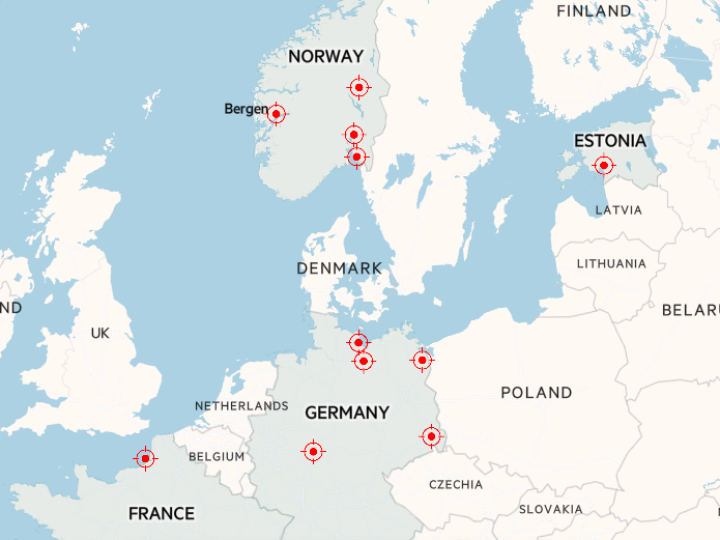
William Alberque, a former NATO official now with the Stimson Center, indicated that the recently uncovered maps represent only a fraction of the extensive target list compiled by Russia. “This is just a small sample of what amounts to hundreds, if not thousands, of targets mapped across Europe, including both military and critical infrastructure sites,” he said.
Russia’s capability to strike across Europe puts numerous targets at risk, analysts and former officials warn, especially if its forces engage with NATO in frontline countries such as the Baltic states and Poland.
Jeffrey Lewis, a professor at the Middlebury Institute of International Studies at Monterey and an expert on arms control, noted, “Their concept of war is total war. They view tactical nuclear warheads as potentially decisive weapons. They are likely to want to use them, and use them quickly.”
Tactical nuclear weapons, which can be delivered by land or sea-launched missiles or aircraft, have a shorter range and less destructive power compared to strategic nuclear weapons aimed at targets like the US. Nonetheless, they are capable of releasing significantly more energy than the bombs dropped on Hiroshima and Nagasaki in 1945.
Russian President Vladimir Putin has repeatedly warned Ukraine’s European allies to temper their support for Kyiv, emphasizing their vulnerability. In May, he remarked, “They need to remember they are small, densely populated states.”
In June, Putin claimed that Europe would be “more or less defenseless” against potential Russian missile strikes.
The documents also discuss the possibility of a “demonstration strike,” which involves detonating a nuclear weapon in a remote area as a show of force before actual conflict begins. This tactic, not officially acknowledged by Russia, aims to intimidate Western countries by demonstrating the availability and readiness of precision non-strategic nuclear weapons.
Alberque commented, “They want the fear of Russian nuclear weapon use to be the magic key that unlocks Western acquiescence.”
The files reveal that Russia’s primary goal in a potential conflict with NATO would be to “weaken the enemy’s military and economic potential,” a strategy that could involve targeting civilian sites and critical infrastructure, as seen in Ukraine.
Fabian Hoffmann, a doctoral research fellow at the University of Oslo, explained that the combination of nuclear and conventional strikes outlined in the documents serves as a signal to adversaries to negotiate. “It’s essentially a package to indicate that tensions are escalating and it would be wise to start discussions on settlement,” he said.
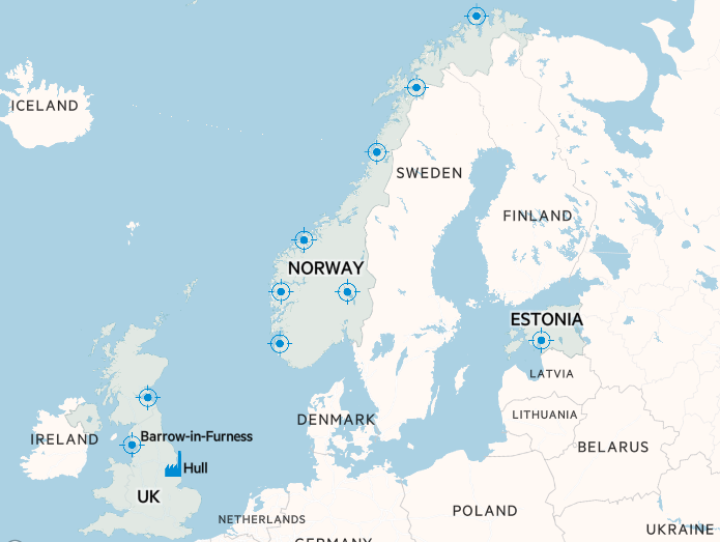
The leaked documents reveal that Russia continues to maintain the capability to deploy tactical nuclear weapons on surface ships, despite the 1991 agreement between the Soviet Union and the US to eliminate such weapons.
Among the systems listed for carrying tactical nuclear weapons are “anti-submarine missiles with nuclear warheads placed on surface ships and submarines” and “ship and shore-based anti-aircraft guided missiles with nuclear warheads designed to neutralize enemy air defense systems.”
William Alberque, expressed alarm at this admission, highlighting the risks of deploying nuclear weapons on surface vessels. Unlike strategic ballistic missile submarines, which are designed to launch from deep underwater, surface ships carrying nuclear warheads face heightened risks from weather conditions and potential enemy strikes.
Recent Russian military exercises have further supported the documents’ claims. In June, Russian forces practiced loading Soviet-era P-270 anti-ship cruise missiles onto a Tarantul-class corvette in Kaliningrad. NATO officials suspect that Kaliningrad hosts an undeclared stockpile of tactical nuclear warheads.
Earlier, the Defense Ministry announced the beginning of a “third phase” in its ongoing non-strategic nuclear weapon drills, which initially began in the spring 2024.
-ba02b3bc86f0b624f99115809a6a34d0.jpg)



